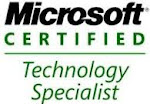While working with SharePoint site restoring with PowerShell commands I got an
error saying that,
Restore-SPSite : The
content type text/html; charset=utf-8 of the response message does not match
the content type of the binding (application/soap+msbin1). If using a custom
encoder, be sure that the IsContentTypeSupported method is implemented properly
After googling some time I got the cause and fix for the
solution. In my case in my current secured store service web application web.config
file we have some duplicate nodes for forms based configuration.
To fix that we need to follow the steps below,
- Open SharePoint server form and open IIS manager.
- Open SharePoint Security Token Service Application and Explore the web application details for web.config file.
- In the web.config file verify the duplicate nodes and check all the nodes are allocated properly in the web.config file. In my current scenario we got extra node in forms based authentication configuaration. I have removed the duplicate node and restored the site.
Now I am able to restore the site. Hope this will helps.




















